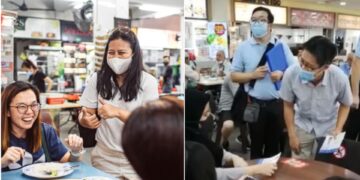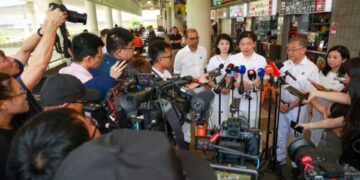Editor’s note: this article was first published on 21 September 2020 and has been updated for accuracy and comprehensiveness.
Fill Me In
A reddit user, Doxq, recently posted a harsh critique of the SGUnited Traineeships Programme, claiming that it isn’t very helpful. The reasons laid out in the critique included the small target audience of this programme (namely, people who have graduated or will soon be graduating from tertiary institutions in 2019 or 2020), the handicapping of those who are not eligible for the programme since firms are incentivised to hire the said target audience, and the prevention of the rest of the workforce from accessing jobs which only require fewer years of work experience.
Adapting to the current economy
The aforementioned points only hold true if you look at this programme without considering the others that have been rolled out by the government to support jobseekers of other demographics. For those who are not graduates or soon-to-be graduates, look to reskilling programmes and the gig economy as alternatives.
COVID-19 has, after all, forced a rethink of the kind of fundamental skillset that employees must possess in the new normal. As social distancing continues to separate us physically, it has become all the more important to develop our emotional and cognitive aspects. Not only has there been a greater need to be able to nurture professional relationships remotely but also there have been greater demands on our creativity and critical thinking.
A shift in mindset
Rather than complain about how irrelevant the traineeships programme is to your current predicament, focus instead on moulding yourself into an invaluable player in our hard-hit economy. Besides, regardless of whether or not you are eligible for the traineeships programme, the resilience to continue innovating and adapting to current times is what will keep you afloat.
Main concerns with the programme
Meanwhile, netizens have raised two main concerns, namely future employers might scale trainees’ salaries down based on their last drawn salaries and Central Provident Fund (CPF) contributions, overtime pay and benefits are not stipulated in this scheme.
Firstly, potential candidates should keep in mind that traineeship is used by employers to prepare new staff for a specific role. Therefore, they should use the programme as a stepping stone to eventually secure a full-time role at the same company.
How to better improve the scheme
One loophole, however, is that host companies could exploit this scheme to hire fresh graduates at lower costs, with no intention of eventually converting them to full-time employees. To counter this, the government should stipulate checklists (that are subject to the approval of the appointed programme manager, Singapore Business Federation) drawn up by employers to objectively grade trainees and determine if they are fit to be converted to full-time employees. Furthermore, if a trainee fails to meet certain criteria in the checklist (and therefore cannot become a full-time staff), then their employer must explain why this happened.
In the meantime, given the risk involved, it would be wise for trainees to use their stints to tide them over until they have found full-time roles at other companies since they are allowed to leave their traineeships at any moment (provided that sufficient notice has been given beforehand).

Legal perspective to consider
Secondly, we can look at the conferment of CPF contributions to trainees from two perspectives: legal and economic. From a legal perspective, host companies are not required to grant trainees the above right simply because they are not considered employees. And while the programme does not give any reason why trainees are not considered employees, it can be assumed that the contracts of service under this programme state that trainees will be given training assignments instead of actual work, do not have clauses implying that trainees are employees, or both.
…and an economic perspective
Now, why can’t the government stipulate this right in the programme then? This brings me to the economic perspective. Given that a large majority of the host companies under the programme are small and medium enterprises (SMEs) and that many SMEs are on the brink of extermination due to COVID-19, it is plausible that the government intentionally chose not to enforce CPF contributions to reduce manpower costs of these companies (as well as increase trainees’ disposable incomes in a challenging economic climate).
While host companies are also not legally required to provide trainees with overtime pay and benefits (i.e., annual leave and sick leave), I strongly feel that both should still be mandated to prevent trainees from being underpaid (in the event that they are required to work overtime) and to ensure that their health is prioritised over work. Jeraldine Phneah, a Singaporean blogger, further adds that since the government is already heavily subsidising trainees’ stipends, it would not be unreasonable at all to demand that companies provide trainees with a fundamental benefit like sick leave.
What do fresh graduates have to say?
The general consensus among fresh graduates of 2020 is that there has been little or no success landing positions under the traineeships programme. In the discussion thread, one graduate claimed that they had applied for numerous creative positions but to no avail. Yet, another responder countered this point by stating that, within two weeks of applying for traineeship positions, they had successfully landed an interview with a suitable employer who then hired them two weeks later.
Host companies redirected to SGUnited Mid-Career Pathways Programme
One discrepancy that I would like to point out is that, although Workforce Singapore has had to close its traineeships programme due to an overwhelming supply of host companies, it seems that fresh graduates have been unable to secure traineeship roles at these companies — why is this so?

Nonetheless, this adjustment made by the government to cater to mid-career individuals is well grounded. According to the South China Morning Post, employers have been shunning mid-career workers due to their lack of adaptability to the job demands of a rapidly-changing work environment (especially as more companies ramp up on digitisation) and the high costs of hiring them, and favouring fresh graduates instead.
SGUnited Mid-Career Pathways Programme – Enterprise Attachment track
For the SGUnited Mid-Career Pathways Programme, there are two routes that trainees can take: enterprise attachment or company training.
In a nutshell, the enterprise attachment route requires trainees to join host companies for up to nine months so as to gain meaningful work experience while the company training requires trainees to undergo 6-12 months’ full-time training provided by reputable companies so that they will become more employable.
But since the government’s main priority has been to help displaced PMETs transition into new jobs via company attachments, which the Minister for Manpower hoped would give PMETs “a chance to be with” prospective host companies, we shall focus on the enterprise attachment route.
Eligibility
The enterprise attachment track is eligible for all Singaporeans and Permanent Residents who are not eligible for the SGUnited Traineeships Programme.
Training allowance
Mid-career individuals on this track are entitled to a monthly training allowance of up to $3,000, depending on the scope of the attachment.

Conversion to full-time employment

Potential candidates should be mindful of the fact that if trainees’ performance is deemed satisfactory by their host companies, then they stand a good chance to be offered full-time employment by said companies.

However, on the other hand, if host companies decide not to convert the trainees to full-time staff upon the completion of the attachment, then they are free to look for jobs elsewhere.
Benefits such as annual leave and sick leave

Like the SGUnited Traineeships Programme, the company attachment offered by the SGUnited Pathways Programme does not require host companies to provide annual leave and sick leave to trainees as they are not considered as employees. However, host companies can still offer non-monetary benefits to them on a goodwill basis.
CPF Contributions by host companies

Potential candidates must also take note that host companies are not required to make any CPF Contributions to their CPF Accounts as they are not considered as employees. However, trainees can still make Voluntary Contributions to their own CPF Accounts as non-self-employed persons.
What if I am a contract/full-time/part-time worker and would like to sign up for the company attachment programme?


Any mid-career individual who is interested in joining the programme should look for attachment opportunities on MyCareersFuture under the hashtag, #SGUP.
SGUnited Traineeships Programme lays groundwork for future iterations
All in all, the SGUnited Traineeships Programme is well-intentioned despite its poor design. Going forward, the government should actively review graduates’ feedback so that it can realistically address their concerns and fill up any loopholes that have been exposed.
Join the conversations on THG’s Facebook and Instagram, and get the latest updates via Telegram.














